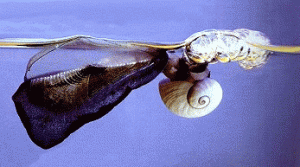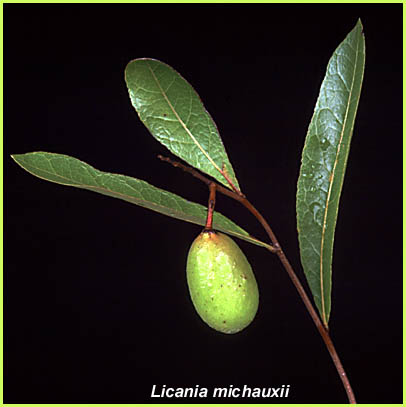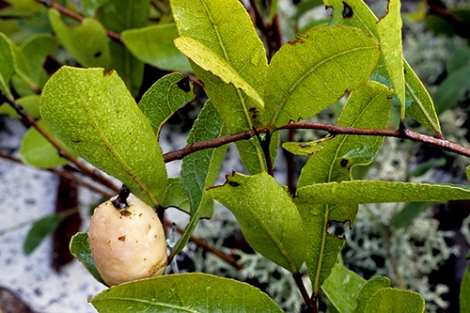As the oil drifts slowly, inevitably, to landfall on my beloved peninsula I have spent more time walking the beach. There are many, many of us walking in the surf, searching for the dolphins, rays & silly jumping mullet that make our daily walks a daily treasure. And there have been a few intrepid fishermen braving the waves and federal ban for one last catch.
It’s a very sad and frustrating time.
But I have experienced some gifts from the gulf this week that remind me why I moved here…. delightful and unexpected.
As the storms cleared this week, and the oil had not moved any closer to shore, we walked down the beach and found some unusual purple shells. They were fragile, and mostly crushed by the waves, but I did find two intact (and smelly) remnants. After some research on Google I found they were probably janthina, a remarkable creature from the gulf.

Janthina in soap
They are hitchhikers from the dangerous galaxy of jellyfish!
From SeaPics.com…
<<The violet snail is a marine gastropod that spends its whole life drifting on the ocean surface in warm seas, floating on a bubble raft of its own making. It feeds on jellyfish, such as the By-the-wind-sailor, Velalla velalla, or the Portuguese man-o-war, Physalia physalis. It starts life as a male and becomes female over time.
The violet snail, Janthina janthina, also known as the purple bubble raft snail, is holopelagic, meaning it spends its entire life cycle on the open sea. It secrets mucus from its foot which binds bubbles together in a raft, on which it floats freely on the ocean, in equatorial and temperate waters. Its shell is 3-4 cm in size, light and fragile, and is a dark purple at the widest part, fading to a light purple at the narrow top. Its body ranges from dark purple to black.>>

From JulianRocks.net
I was sad to find they were already decaying and could not be tossed back to the waves to find a new host.
And today I came across some turtle tracks.
Sophie and I have watched the crew from the Bon Secour National Wildlife Refuge mark a turtle nest before, but I’ve never had the privilege of being the first one to call in about new tracks in the sand. Maybe they were running a little late because of the unexpected visit from Secretary Salazar yesterday?

Megan, from the U.S. Fish & Wildlife Service, follows the turtle tracks
They sent a nice young lady named Megan so I took her to the the driveway of the GRITS (Girls Raised In The South) house and we followed the tracks back to the beach. They wandered aimlessly in front of 5 or 6 houses on the beach before we reached the point where the turtle came up from the ocean.
Megan was mystified, she’s from Colorado and has only been here a few months. She was, she said, more accustomed to tracking bears!
She said the size indicated perhaps a juvenile and the coma-shape of the prints showed it was moving away from the ocean, to the GRITS house, and then across the road, where we lost the trail.

Megan measures the turtle tracks
She got a call from Jackie, the biologist at the Bon Secour office, and she described the tracks. Jackie evidently told her this was probably not a sea turtle and, as Megan hurried back to her truck she suggested I ‘google’ marine tortoise to find more information about our little visitor.
I did, and I also looked at the Bon Secour species list and I didn’t find any tortoise or terrapin that came out of the gulf to wander the sand and then flee across the road (as she/he passed over the dune between beach houses there was no tail track, so maybe she was sprinting?)
http://www.fws.gov/bonsecour/reptiles.html
Could this have been one of the Diamondback Terrapins currently being rescued by UAB?
<<…only 50 mature females are wild in Alabama. “These species is just teetering on the edge of survival,” said Dr. Thane Wibbels, a UAB biologist. The terrapin aren’t endangered but considered a species of highest conservation concern.>> from the ABC news story.
http://www.abc3340.com/news/stories/0410/730987.html
If so, I’m glad she made her trip to the beach before BP’s oil gets here…












